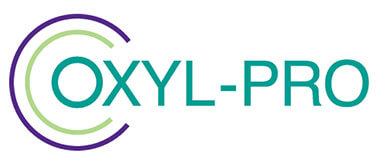A legionella risk assessment is crucial because man-made water systems are potential breeding grounds for the legionella bacteria.
Legionella can breed and spread in:
- Plumbing and pipework
- Taps and showers
- Hot water and cold water systems
- Cooling towers and cooling systems
- Humidifiers
- Thermal spas and hot tubs
- Fountains.
All employers, landlords and managers of premises must understand the risks associated with legionella and carry out regular and systematic legionella risk assessments.
Are Legionella Risk Assessments Mandatory?
- Under the Health and Safety at Work Act 1974, employers must protect employees from legionella risk. This duty also applies to managers of premises and landlords.
- Control of Substances Hazardous to Health (COSHH) regulations provide a framework for assessing, preventing or controlling the risk from bacteria such as legionella.
- The HSE has an approved code of practice for the control of legionella bacteria in water systems.
If you are in control of premises then you must:
- Identify and assess sources of risk
- Manage any risks
- Prevent or control any risks
- Keep up to date records.
What Does a Legionella Risk Assessment Involve?
A legionella risk assessment must identify and assess the sources of legionella risk.
This means checking all the water systems on-premises and understanding how they work. This should enable the risk assessor to identify whether they are likely to be a risk from exposure to legionella.
There are core questions the risk assessment should answer:
- Is the water temperature in all or part of the system is between 20°C and 40°C?
- Does the system store or circulate water?
- Are there sources of nutrients in the water such as rust, sludge, scale, biofilm or organic matter?
- Are there conditions likely to cause bacteria to multiply?
- Can the system produce water droplets, and if so, can this spread more widely?
- Are any employees, visitors or residents more susceptible to legionella infection due to age or health conditions?
The legionella risk assessment should also include information about management responsibilities, and the competence and training of key personnel.
It should identify any potential sources of risk and the means for preventing or controlling this risk.
It should give details of procedures for monitoring, inspection and maintenance.
The risk assessment should provide records of monitoring results, inspections and checks that have been carried out.
It should include arrangements to review the risk assessment regularly and ensure that it continues to be valid.
How Should You Carry Out a Legionella Risk Assessment?
This needs to be detailed, diligent and systematic.
You should address all the questions listed in the section above, and include all the necessary details, records and recommendations.
You may come to the conclusion that there is no foreseeable risk, or that the risks are sufficiently controllable and managed to be within the law. If this is the case then the assessment is complete.
However, you must carry on maintaining any existing legionella controls, and review your assessment regularly, to check that nothing has changed in your water system.
Who Can Conduct a Legionella Risk Assessment?
As the person in control of premises or an employer, you must appoint a responsible person to conduct a legionella risk assessment.
This person can be you, one or more employees or a third party from outside your business.
The responsible person must have the necessary authority, skills, competence and knowledge to manage legionella risk assessment effectively. This includes having a good knowledge of relevant water systems, and what operational procedures are involved with them.
Should you decide to use a contractor for your risk assessment, you are still responsible for ensuring that they carry out the work to a required standard.
The responsible person should take on the daily management task of controlling any identifiable legionella risk and making sure that all related tasks are carried out safely and competently.
How Do You Control Legionella Risk?
The risk assessment should point uncover and identify actual and potential legionella risks.
You need to control these risks by designing, maintaining and running water services that can prevent or control the spread of legionella.
One valuable tool for doing this is water treatment. Cleaning the pipework that delivers water supplies is an essential step in removing legionella and the biofilm that is a source for harmful bacteria.
For more information about using Oxyl-Pro for removing biofilm and controlling legionella, please call us on +44 1606 851 782, email enquiries@oxylpro.com or complete our contact form.

